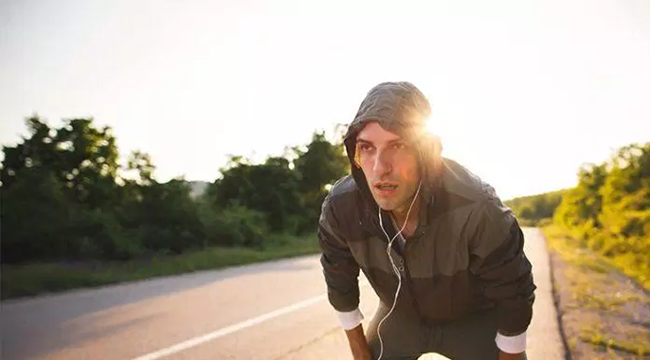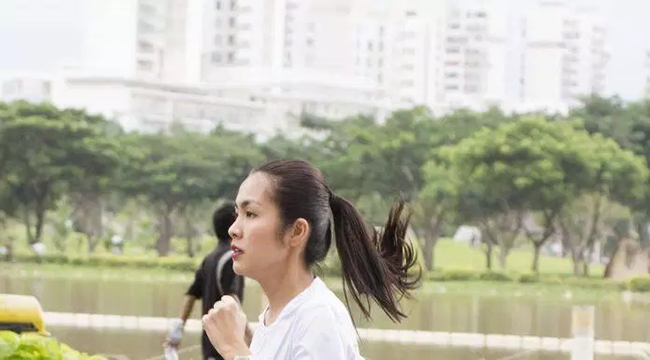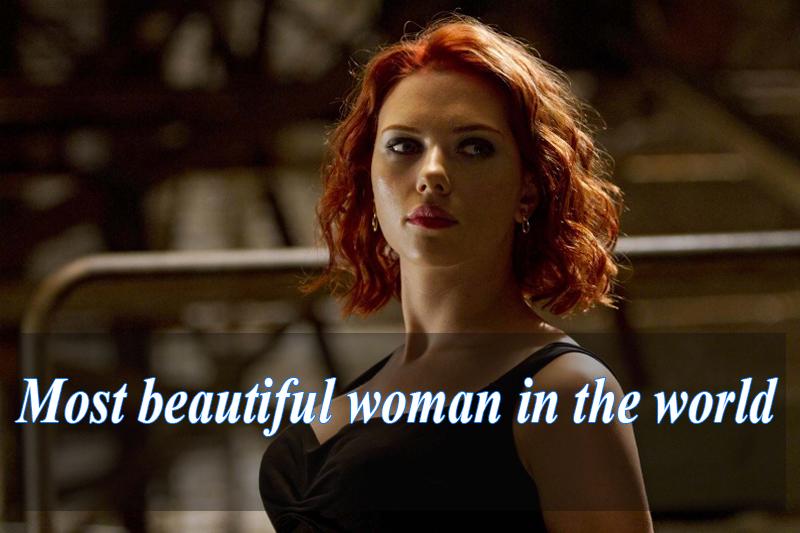Practicing breathing is one of the essential things in daily life, not only in practice because all of our activities require energy, but breathing can ultimately help you regulate your energy instead of appropriate change.
Breathing is one factor that has the most influence on exercise performance, but it is also often overlooked by many impatient people. Whether you've just started practicing or are seasoned, the proper breathing method will help you go far on your journey to conquering your limits.
For hundreds of years in the human realm, everyone has to breathe in and out.
Breathing is the most natural human instinct; since birth, no one has to breathe. But after so many years of “breathing,” when you grow up in the gym, people teach you how to live correctly. “There's nothing to learn when breathing; act like you don't know.”
Well, did you know?

If you're still thinking that breathing is simply inflating your chest to get air in and then letting it out, the good news is that you're on the side of most people right now, and the bad news is that thought is a bit “naive.”
Breathing is a complicated topic that scientists have researched for years, and sportspeople are struggling to find the most effective breathing method, but in the end, there are nine people and ten ideas.
So, after all, how important is breathing to exercise? How does proper breathing help an athlete's performance? And finally, what is the specific method to achieve the best effect? All will be answered in this article.
1. Mechanism of respiratory activity

To understand how to breathe, we must first know how it happens. Like you have to see the principle of the car's construction to know how to fix it. Preceding, this scientific explanation is a bit sleepy, so anyone who wants to surf quickly is welcome, but it is best to read for a bit of background knowledge.
The figure above shows the anatomy of the respiratory tract. Air from the outside enters the nose or mouth, all the way to the pharynx, larynx, through the trachea, and then branching along the bronchi into the lungs.
The lungs are made up of millions of tiny air sacs called alveoli, each surrounded by small blood vessels to carry out the gas exchange.
Oxygen molecules diffuse from the air into the blood, while carbon dioxide from the blood diffuses into the alveolar lumen and then exits the same way in the opposite direction.
And this picture is the respiratory muscles that perform the daily task of breathing for us. It can be understood simply that air is inhaled when the ribcage is pulled open by these muscles (called negative pressure, like when you pull a syringe and the COVID vaccine is sucked in).
The most important is the diaphragm because this muscle is large and very strong and can pull the chest to expand the most compared to other muscles, creating a more potent air suction force.
In normal breathing, the diaphragm plays an almost decisive role. When exertion needs more oxygen, other muscles will pull the ribcage more, but the diaphragm is still dominant.
Breathing is divided into 2 phases, or 2 phases: inhalation and exhalation. Inhaling is active, which requires muscle use and effort, and exhalation is passive, with almost no effort (unless you exhale as hard as you can by pressing your chest to flatten your abdomen, then it will take a few minutes) muscles work to push out all the air in the lungs).
So how is this book knowledge applied in practice? First, you have to do each breath correctly according to the method called…
2. Abdominal breathing technique – diaphragmatic breathing
As mentioned, the diaphragm is the primary muscle that pulls the chest the most. If you use this muscle correctly, you will inhale the most oxygen for the body and eliminate the toxic gas the most effectively.
That is why diaphragmatic breathing is recommended by experts in all activities, from rest to gentle “sects” like yoga, meditation, and even heavy training like sports encouragement; even when singing, one has to breathe through belly breathing too!

Scientists have found that babies and young children instinctively breathe because that is the best way to breathe. But in growing up, many of us have “learned” how to breathe through the chest, which is both ineffective and has long-term effects on health.
To make it easier to imagine, pay attention when breathing. If your shoulders rise and fall and your chest stretches first, it means chest breathing, and if your belly increases, it implies belly breathing.
Chest breathing is prevalent in people who are often stressed or have just finished strenuous activity. It helps the body take in the air quickly to meet immediate short-term needs (such as dealing with stress or lack of oxygen during heavy exercise). Still, breathing is short and shallow, so it cannot bring oxygen deep into the lung's cysts and not push much residual gas out of the lungs.
Chest breathing uses very little of the diaphragm, but mainly to the accessory respiratory muscles. In the long run, this way of breathing can make you more stressed, not less.
Contrary to chest breathing, abdominal breathing uses the diaphragm mainly, pulling the chest down so it presses on the internal organs, causing the abdomen to swell.
This type of breathing helps get more oxygen and bring it deeper into the lungs, and when exhaling, it also squeezes more harmful gases out.
The beneficial effects of belly breathing have been scientifically proven, but since ancient times people have applied it to all areas of movement, such as yoga, meditation, qigong, martial arts…
Those who have studied through it. These subjects must memorize the first lesson: belly breathing!

Not only is it beneficial for physical strength, but belly breathing is also beneficial for mental health because it calms the mind, reduces stress and anxiety, and increases the perception of one's own body – these are the factors This is a factor that few people notice, but it has a significant influence on the results and training achievements.
3. Breathe through your nose or your mouth?

In the normal state, no one opens their mouth to breathe.
Our noses are specially adapted to breathe: nasal hairs and mucus help prevent dust and airborne bacteria from entering the body, moist mucous membranes help humidify inhaled air, and The submucosa blood vessels warm the air before it goes deep into the lungs.

When inhaled through the mouth, all the above functions will disappear. Toxic impurities are not prevented; the dry and cold air is easy to irritate the respiratory tract. The mouth is also more significant than the nose, so the amount of water vapor in the body is also lost more, making you feel sick dry throat, dry mouth, and if prolonged, it can cause dangerous dehydration.
However, mouth breathing has a significant advantage when we exercise vigorously; that is, it helps to take in oxygen and release carbon dioxide faster and more quickly than breathing through the nose.
This immediate effect is beneficial when the body is in a state of “out of breath” when the priority is to exchange gases not to suffocate, not to clear inhaled air.

So in most cases (when resting or exercising is not too heavy), you should breathe through your nose, and when it is too “hard” (such as running 100m), breathing through your mouth is also okay.
4. Specific breathing for each type of exercise
Belly breathing or chest breathing is only one aspect of breathing; to master this technique, you need to pay attention to the tempo and control of the breath during the practice. That again depends on the type of exercise of different nature.
4.1. Resistance exercise

For example, lifting weights, push-ups, or pull-ups, generally, all movements that force muscles to work against some resistance are called resistance exercises (resistance can be the weight itself) body or rubber bands or weights are added).
The general rule for this exercise is: inhale when the muscle is stretched and exhale when the muscle is contracted.
There are many reasons for this rule. The first and most obvious thing is that the exhalation when contracting the muscles helps to reduce the burden on the body because inhaling is an active movement that requires muscle strength “indescribable”!

Another important reason is that when you exhale, you will squeeze the core to help stabilize the body during exercise, especially exercises that need to be stable, like squats or deadlifts.
A solid body will give you better mobility, and you need it for contraction, not extension. Many beginners do not know this, so they often lose energy because the core is not stable.

And another thing, the exhalation when contracting the muscle acts as a “valve” to prevent blood pressure from rising and falling abnormally.
Surely many people, when doing complex movements or increasing too heavyweights, experience slight dizziness, a feeling of head-spinning for a split second because the blood flow to the brain is reduced immediately. Proper breathing, as the principle above, will prevent that phenomenon.
In short, exhale while contracting and inhale while stretching during resistance exercises; this will help you exert more power, lift heavier weights, reduce fatigue and not feel dizzy after a workout.
4.2. Endurance exercise – cardio

Unlike the above type of resistance exercise, endurance exercises do not require the muscles to work too hard, but the point is to maintain them for a long time.
Therefore, the goal in breathing is to keep your breathing steady and steady throughout the practice.
If your breathing is “out of rhythm,” you will immediately feel a decrease in strength and mental confusion; as a result, you will not be able to continue practicing anymore.
To better understand the rhythm of the breath, let's take an example from the simplest and most popular cardio exercise: jogging. The movement of lifting your legs up and down when running is the rhythm for you to apply to breathe.
Each time the foot touches the ground is one beat, from which there are formulas such as 3:2 or three steps inhaling – 2 degrees out, or 3:3, 2:1, even 1:1.

The ratio 3:2 is most often recommended by sports experts, and 2:1 or 1:1 is often used when running fast or when exhausted, needing to take in oxygen and release carbon dioxide as quickly as possible.
For many people, 3:2 breathing while jogging may seem difficult at first, but try slowing down a bit, focusing awareness on your steps, and breathing at the same time, counting in your head. “1, 2, 3” and then “1, 2” correspond to the inhalation and exhalation.
After a while, you will get used to that rhythm and feel it becomes an instinct every time you lift your legs to start the run.

Taking deep breaths and maintaining such a regular rhythm helps the respiratory system to carry out gas exchange continuously and fully, thereby reducing the burden on the heart.
If breathing is irregular, the heart will have to contract more and faster to bring less oxygenated blood to the muscles and the lungs to get more oxygen.
When you breathe correctly, you will reduce this problem and help your heart “wholeheartedly” serve the cardio exercise so that the training performance will be significantly improved.
When your body is tired at the end of the run, you can switch to a 2: 1 breathing pattern. It's completely natural and normal; maintain a deep breath and steady rhythm during each step below:

Other cardio exercises like jumping jack or burpee apply the same principle: use the movement of the activity itself as a rhythm for breathing.
Try to find a formula that works for you. Remember that all procedures are approximate because everyone's body will adapt to different training regimens, so don't force yourself if something feels right fit and not comfortable.
4.3. Static exercises and resting state

This group includes movements that need to be maintained in a fixed position for a long time, such as the plank, planche, low squat, etc. All action of the joints must be eliminated, and muscles are kept in a state of tension hard for as long as possible.
Such a feature of standing still is very similar to ancient forms of practice such as yoga, meditation, or qigong, so the breathing method for static exercises is the same way of breathing regulation of the ancients retransmit.
Accordingly, we need to inhale slowly, deeply, and feel the fresh air entering every corner of the body (sounds a bit abstract, but it's easy to imagine, there's nothing mystical here).

After inhaling deeply and fully, hold your breath for a few seconds, and then slowly exhale too slowly and deeply, expelling as much air as possible from the body.
Finally, hold that “flat” state for a few more seconds, then inhale again as before to start a new cycle. Thus, each breath consists of 4 different stages in succession.
Not only is this a golden rule that must be followed in the above disciplines, but this slow breathing technique has also been scientifically proven to have a positive impact on physical and mental health, helping to relax the mind. and think more coherently.
The US Navy SEALs also use it to stay calm in the face of danger, in which each breathing phase lasts 4 seconds (inhale, hold, exhale, hold).

See how diaphragmatic breathing helps you relieve stress in the video below:

The cool thing about this breathing technique is that you can use it even while resting. Everyone who has ever studied sport knows that performance on the training field depends not only on the training process but is also greatly influenced by how you “rest.”
Diet and bedtime are factors that almost everyone knows, but the right way to breathe can seem quite strange.
The slow and deep breathing method helps the body get more oxygen for the muscle cells, thereby reducing the production of lactic acid, which causes muscle pain and limits the ability to exercise.
At the same time, deep breathing helps relax the mind, reducing biological reactions that cause stress, thereby assisting muscles to have better recovery conditions. Not to mention the effect of making the spirit cheerful and lively to enjoy life too!

5. Summary
The minor things sometimes decide everything. Breathing is automatic, but breathing properly requires learning. Each type of exercise will have its appropriate breathing method, but the general rule to remember is to take deep belly breaths, maintain a steady breathing rate, and practice slow breathing whenever possible.
View more:
- How to Increase Protein in Body Naturally?
- Functional Training Exercises at Home Help You to Be as Agile as a Kid
- Cycling to Lose Weight Help You? What Are The Right Ways?
Training performance comes from many factors; lack of any element is imperfect and results in unsatisfactory results. If you are experiencing a situation where you can't get up and stay still, apply the correct breathing technique today to break your limits. Warmly greet and win!






